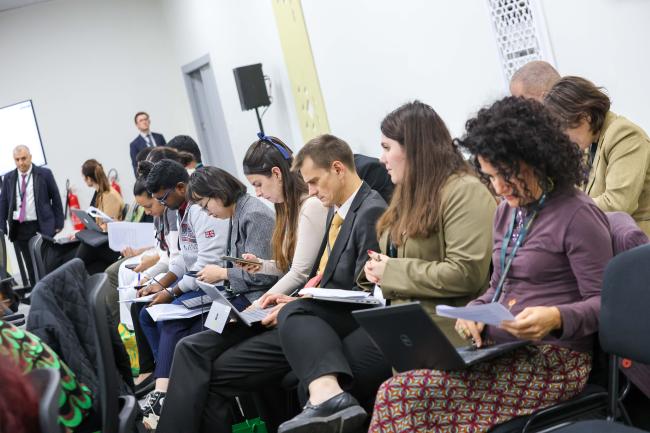Wednesday was “Land Day” at the 16th meeting of the Conference of the Parties to the UN Convention to Combat Desertification (UNCCD COP 16). On the first day of the COP’s Action Agenda, side events and other activities focused on the role of healthy land in combating climate change, creating jobs, and reducing poverty, emphasizing nature-based solutions and engaging with the private sector.
But, in a sense, every day at the COP is land day, as the Convention itself tackles the urgent issue of land degradation, which threatens food security, biodiversity, and climate resilience.
Want to dig deeper into today's talks? Read the full Earth Negotiations Bulletin daily report.
In the morning, the UNCCD Gender Caucus held an interactive dialogue on the role of women in sustainable land management (SLM). Tarja Halonen, UNCCD Land Ambassador and Co-Chair of the Gender Caucus, underscored that women and girls in rural communities bear the greatest burden of desertification, land degradation, and drought (DLDD), and that their empowerment is crucial for addressing urgent land challenges.
COP President Abdulrahman Abdulmohsen AlFadley noted that women’s empowerment enhances SLM and the preservation of ecosystems, as well as long-term resilience against DLDD.
Ibrahim Thiaw, Executive Secretary, UNCCD, highlighted the “shocking figure” that women produce up to 80% of food in developing countries but only own 13% of agricultural land in the world.
Other speakers highlighted the need to address discriminatory practices and systemic barriers restricting women’s empowerment, national gender strategies, gender mainstreaming, integrated gender-responsive policies, and gender-responsive budgeting. They also discussed links between the gender gap and food insecurity, as well as the role of women in peacebuilding and as agents of change.
A joint session of the Committee for the Review of the Implementation of the Convention (CRIC) and the Committee on Science and Technology (CST) addressed monitoring and indicators, including on land degradation neutrality (LDN). They agreed to meet in a contact group to further discuss preparations for the 2026 UNCCD reporting process, the need to enhance existing indicators, and the shape a post-2030 monitoring framework.
In the afternoon, the CRIC discussed the Global Environment Facility’s report on the financing of DLDD programmes and projects, and the need for additional funds.
The Committee of the Whole opened discussions on:
- DLDD as a driver of migration;
- The need to integrate land tenure and gender into land degradation neutrality plans and the development of more transparent land management systems; and
- Follow-up on the midterm evaluation of the UNCCD Strategic Framework 2018-2030.
Contact groups also met to begin negotiations on several draft decisions: science-policy recommendations on sustainable land use systems (SLUS); science-policy recommendations on aridity trends, projections, and impacts; reporting; and drought.
To receive free coverage of global environmental events delivered to your inbox, subscribe to the ENB Update newsletter.
All ENB photos are free to use with attribution. For UNCCD COP 16, please use: Photo by IISD/ENB | Anastasia Rodopoulou


















































































